What is FMS? Why you need a Functional Movement Screen, Part 1
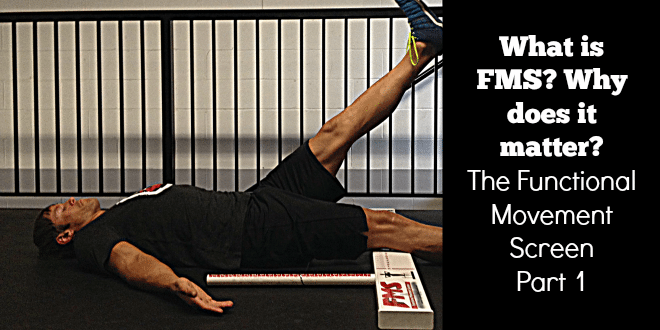
[caption id="attachment_17222" align="alignright" width="300"]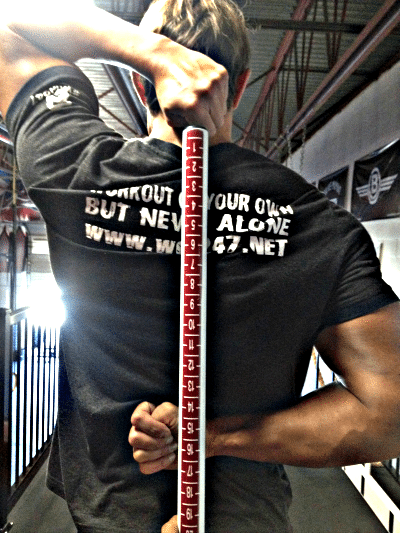 Moose's Shoulder Mobility needs some TLC... FMS is the rescue![/caption]
Moose's Shoulder Mobility needs some TLC... FMS is the rescue![/caption]
Do you have chronic pains or injuries that perhaps are holding you back from achieving your personal fitness goals?
Have you hit a plateau in your training program and can’t seem to push past it to get to that next level?
Do you know your own risk to injury?
Before I answer these questions, let me paint a typical scenario in the fitness industry to give the answer to these questions some context.
Let’s say you’re looking to improve your fitness. Perhaps improved fitness to you is increased strength, decreased body fat, and improved cardiovascular endurance. Now let’s say you have this chronic back pain that intermittently rears its ugly head to bother you, setting you back a few steps every time you get into a training program. You’re determined to get fit though, so you book a consultation at a typical training facility with all the latest and greatest equipment, and knowledgeable trainers. They take you through their consultation where they go over your fitness goals, perhaps do an injury history, and they may run you through a physical fitness test, or give you a free workout to try it out. It seems like it’s a good thing to do, right?
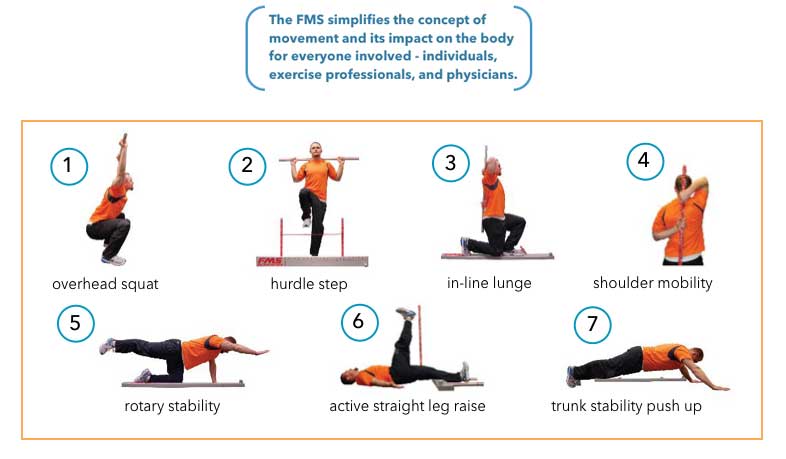
Unfortunately, if you go further and train using that facility’s fitness program, you may be setting yourself up for injury. Maybe it doesn't happen right away but according to FMS research you are more likely to injure yourself because you have movement dysfunction that you didn't even know you had. Movement dysfunction may be the source of your chronic pain or the reason you've plateaued and can’t get to that next level.
The purpose of this post is to educate coaches, trainers, and those people aspiring to reach fitness goals, that it doesn't have to be this way. There is a better, more systematic way to start on this journey. It starts with movement screening.
A Functional Movement Screen is a screening system developed by Functional Movement Systems (FMS). It is the gold-standard of movement screens in the fitness industry. The purpose of the FMS is to rate and rank movement quality by identifying movement limitations or asymmetries in seven fundamental movement patterns that are key to functional movement quality. We use the FMS screen to catch a client’s potential movement dysfunction right at the beginning of their fitness journey. Once we've identified the dysfunctional movement patterns, we can start to figure out the real cause of that dysfunction and prescribe a corrective strategy that will eliminate it, reducing our client’s risk to injury.
The FMS scoring system for all seven movement patterns is as follows:

After we conduct an FMS screen, we look for the movement patterns that received scores of 1’s or 0’s and patterns that have asymmetries. If a client scores a 0 then we’ll refer them to qualified clinicians so that pain can be removed. If a client scores 1’s and/or has asymmetries then we conduct an assessment and determine if the movement dysfunction is a mobility issue or a stability issue. Once we've identified the issue as mobility or stability, we’ll prescribe corrective exercises to eliminate the movement dysfunction and re-screen to ensure that pattern has improved to an adequate score.
Why does your movement quality even matter? The answer is if you have movement dysfunction and consequently, poor movement quality, it could hinder your body’s ability to adapt to a training stimulus like weight training or conditioning work. The whole point of exercising is to train your body so that it adapts and ultimately changes until you reach your fitness goals. If you have poor movement, the best cues or coaching in the world won’t help you because your movement is the limitation. For example, if a coach cues “knees out” while you’re performing a squat, your poor movement may not allow your body to even do that because it’s limited in some way. Your body will then compensate and now you’re training the compensation pattern, rather than training the proper movement. This can potentially cause issues down the road and increase your risk to injury as you continue to pursue your fitness goals.
[caption id="attachment_17225" align="aligncenter" width="660"]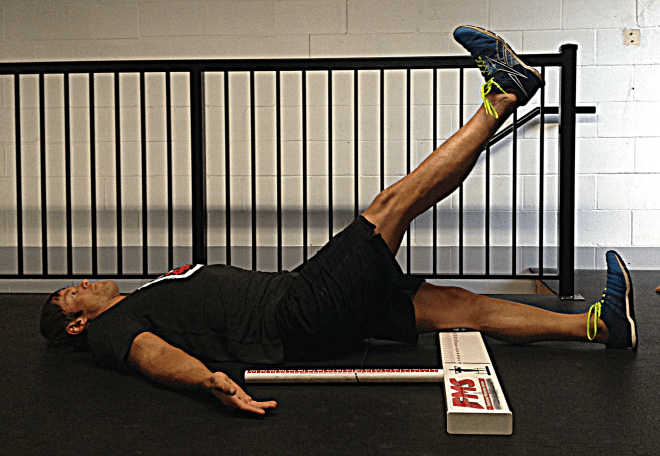 Moose Hammies = 1... got some work to do.[/caption]
Moose Hammies = 1... got some work to do.[/caption]
The FMS is used by many professional sports teams in the NHL, NBA, NFL, and it’s even a station in the NFL combine. Many college, university and national sports teams like the Canadian Women’s Soccer Team use it as well. Unfortunately, not very many fitness professionals, CrossFit boxes, or other professionals that work primarily with the general population conduct movement screens of any kind before they start their clients off on a fitness program. This is a problem and could be a reason for high injury rates that occur during training. A squat is a great exercise but if a coach or trainer doesn't conduct a movement screen of some kind before they start to train their client, then they’ll never know if the squat is an appropriate exercise for their client, or if the client even has the ability to perform that movement.
https://www.youtube.com/watch?v=F4KwxPT0ZVg
[box type="info" align="aligncenter" ]
In Part 2, I discuss the assessment and corrective exercise prescription step in detail and we’ll see how that works out in a video where I’ll conduct that step on Moose.
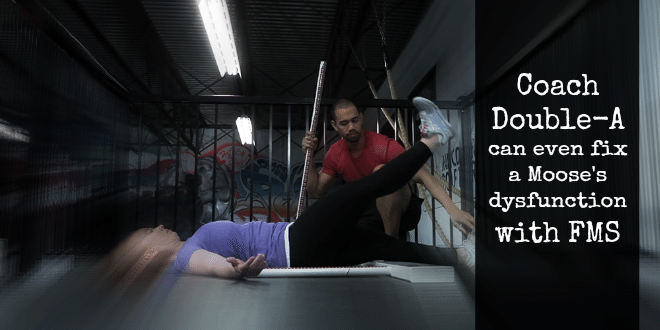
[/box]
[divider]
Anthony Agtarap is a husband, a father, and a former professional engineer who switched careers to follow his passion of empowering people to live a pain-free, healthy, and strong life full of vitality. He is also the founder of Engineered Bodies Strength & Conditioning (aka CrossFit Port Moody).
If you have chronic pains in your daily life and you are tired of not being able to enjoy what life has to offer or if pains are limiting your athletic potential then he will determine the source of those pains and give you the knowledge and systems to eliminate them once and for all. Once you’re pain-free, Anthony helps you move to the best of your ability, then teach you the technical skills that will build a stronger, more powerful, more robust, more energized, more athletic, and more confident version of yourself that you can feel proud of for the rest of your new life. Imagine what that life could be like. He can help you make that a reality.
He is committed to building a strong, supportive, and engaging community of quality “movers” and strives to make a positive change in the community we do business in. He has created and supports many local charity initiatives and continues to support small-businesses in the community. He helps people in the community connect.
Anthony is also driven to seek knowledge and gets excited to share this knowledge with his clients, his teammates, and his community. He has connected with other health and fitness professionals locally and internationally so that they can deliver high-quality educational workshops for other trainers and coaches hosted at Engineered Bodies. He believes by providing education and knowledge, the overall quality of the health and wellness industry will evolve. He wants to be a big part of that evolution.
Follow @aagtarap_peng on Twitter and connect on Facebook.
 Moose's Shoulder Mobility needs some TLC... FMS is the rescue![/caption]
Moose's Shoulder Mobility needs some TLC... FMS is the rescue![/caption]Do you have chronic pains or injuries that perhaps are holding you back from achieving your personal fitness goals?
Have you hit a plateau in your training program and can’t seem to push past it to get to that next level?
Do you know your own risk to injury?
Before I answer these questions, let me paint a typical scenario in the fitness industry to give the answer to these questions some context.
What is FMS? (Functional Movement Screens)
Let’s say you’re looking to improve your fitness. Perhaps improved fitness to you is increased strength, decreased body fat, and improved cardiovascular endurance. Now let’s say you have this chronic back pain that intermittently rears its ugly head to bother you, setting you back a few steps every time you get into a training program. You’re determined to get fit though, so you book a consultation at a typical training facility with all the latest and greatest equipment, and knowledgeable trainers. They take you through their consultation where they go over your fitness goals, perhaps do an injury history, and they may run you through a physical fitness test, or give you a free workout to try it out. It seems like it’s a good thing to do, right?

Unfortunately, if you go further and train using that facility’s fitness program, you may be setting yourself up for injury. Maybe it doesn't happen right away but according to FMS research you are more likely to injure yourself because you have movement dysfunction that you didn't even know you had. Movement dysfunction may be the source of your chronic pain or the reason you've plateaued and can’t get to that next level.
The purpose of this post is to educate coaches, trainers, and those people aspiring to reach fitness goals, that it doesn't have to be this way. There is a better, more systematic way to start on this journey. It starts with movement screening.
A Functional Movement Screen is a screening system developed by Functional Movement Systems (FMS). It is the gold-standard of movement screens in the fitness industry. The purpose of the FMS is to rate and rank movement quality by identifying movement limitations or asymmetries in seven fundamental movement patterns that are key to functional movement quality. We use the FMS screen to catch a client’s potential movement dysfunction right at the beginning of their fitness journey. Once we've identified the dysfunctional movement patterns, we can start to figure out the real cause of that dysfunction and prescribe a corrective strategy that will eliminate it, reducing our client’s risk to injury.
How does FMS work?
The FMS scoring system for all seven movement patterns is as follows:
- A score of 3 if the client performs the pattern as directed
- A score of 2 if the client performs the pattern but requires compensation
- A score of 1 if the client is unable to perform the pattern (movement dysfunction)
- A score of 0 if the client has pain regardless of movement quality.

After we conduct an FMS screen, we look for the movement patterns that received scores of 1’s or 0’s and patterns that have asymmetries. If a client scores a 0 then we’ll refer them to qualified clinicians so that pain can be removed. If a client scores 1’s and/or has asymmetries then we conduct an assessment and determine if the movement dysfunction is a mobility issue or a stability issue. Once we've identified the issue as mobility or stability, we’ll prescribe corrective exercises to eliminate the movement dysfunction and re-screen to ensure that pattern has improved to an adequate score.
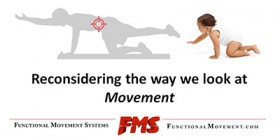 What’s the point of FMS?
What’s the point of FMS?
Why does your movement quality even matter? The answer is if you have movement dysfunction and consequently, poor movement quality, it could hinder your body’s ability to adapt to a training stimulus like weight training or conditioning work. The whole point of exercising is to train your body so that it adapts and ultimately changes until you reach your fitness goals. If you have poor movement, the best cues or coaching in the world won’t help you because your movement is the limitation. For example, if a coach cues “knees out” while you’re performing a squat, your poor movement may not allow your body to even do that because it’s limited in some way. Your body will then compensate and now you’re training the compensation pattern, rather than training the proper movement. This can potentially cause issues down the road and increase your risk to injury as you continue to pursue your fitness goals.
[caption id="attachment_17225" align="aligncenter" width="660"]
 Moose Hammies = 1... got some work to do.[/caption]
Moose Hammies = 1... got some work to do.[/caption]The FMS is used by many professional sports teams in the NHL, NBA, NFL, and it’s even a station in the NFL combine. Many college, university and national sports teams like the Canadian Women’s Soccer Team use it as well. Unfortunately, not very many fitness professionals, CrossFit boxes, or other professionals that work primarily with the general population conduct movement screens of any kind before they start their clients off on a fitness program. This is a problem and could be a reason for high injury rates that occur during training. A squat is a great exercise but if a coach or trainer doesn't conduct a movement screen of some kind before they start to train their client, then they’ll never know if the squat is an appropriate exercise for their client, or if the client even has the ability to perform that movement.
What happens when a Moose meets FMS? Watch and find out
https://www.youtube.com/watch?v=F4KwxPT0ZVg
[box type="info" align="aligncenter" ]
In Part 2, I discuss the assessment and corrective exercise prescription step in detail and we’ll see how that works out in a video where I’ll conduct that step on Moose.

[/box]
[divider]
 Author Bio:
Author Bio:
Anthony Agtarap is a husband, a father, and a former professional engineer who switched careers to follow his passion of empowering people to live a pain-free, healthy, and strong life full of vitality. He is also the founder of Engineered Bodies Strength & Conditioning (aka CrossFit Port Moody).
If you have chronic pains in your daily life and you are tired of not being able to enjoy what life has to offer or if pains are limiting your athletic potential then he will determine the source of those pains and give you the knowledge and systems to eliminate them once and for all. Once you’re pain-free, Anthony helps you move to the best of your ability, then teach you the technical skills that will build a stronger, more powerful, more robust, more energized, more athletic, and more confident version of yourself that you can feel proud of for the rest of your new life. Imagine what that life could be like. He can help you make that a reality.
He is committed to building a strong, supportive, and engaging community of quality “movers” and strives to make a positive change in the community we do business in. He has created and supports many local charity initiatives and continues to support small-businesses in the community. He helps people in the community connect.
Anthony is also driven to seek knowledge and gets excited to share this knowledge with his clients, his teammates, and his community. He has connected with other health and fitness professionals locally and internationally so that they can deliver high-quality educational workshops for other trainers and coaches hosted at Engineered Bodies. He believes by providing education and knowledge, the overall quality of the health and wellness industry will evolve. He wants to be a big part of that evolution.
Follow @aagtarap_peng on Twitter and connect on Facebook.




































































































